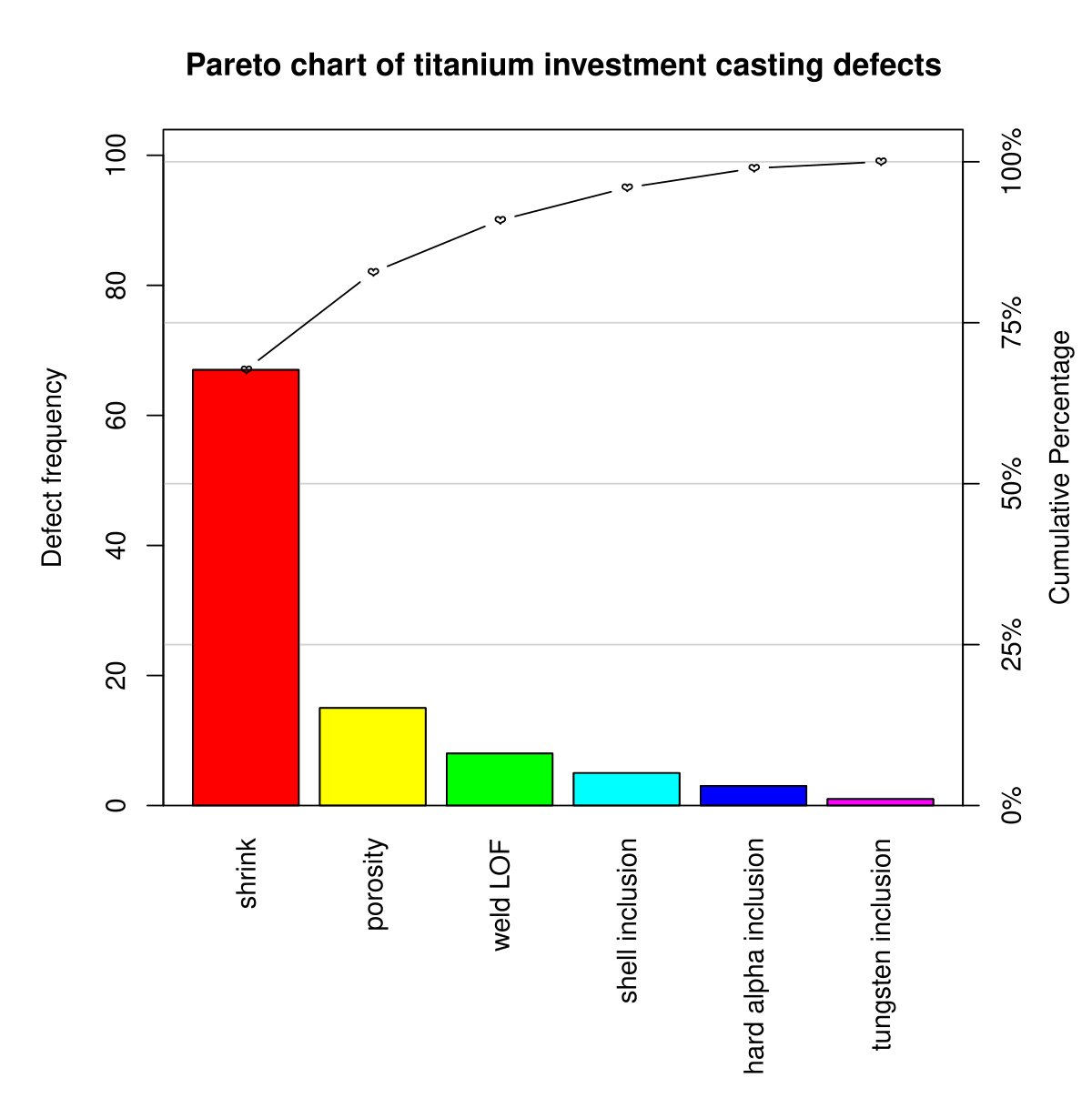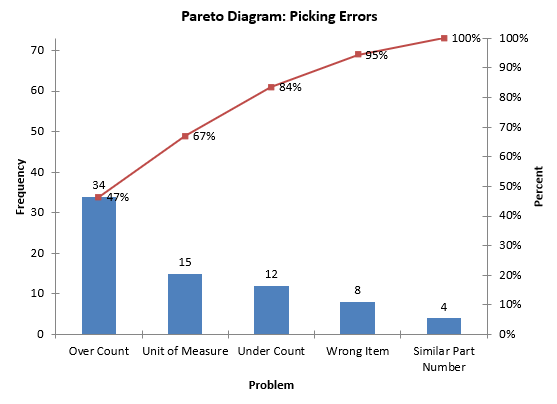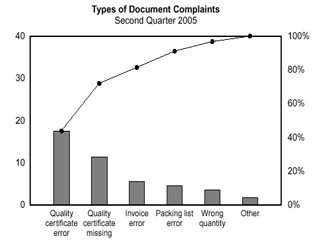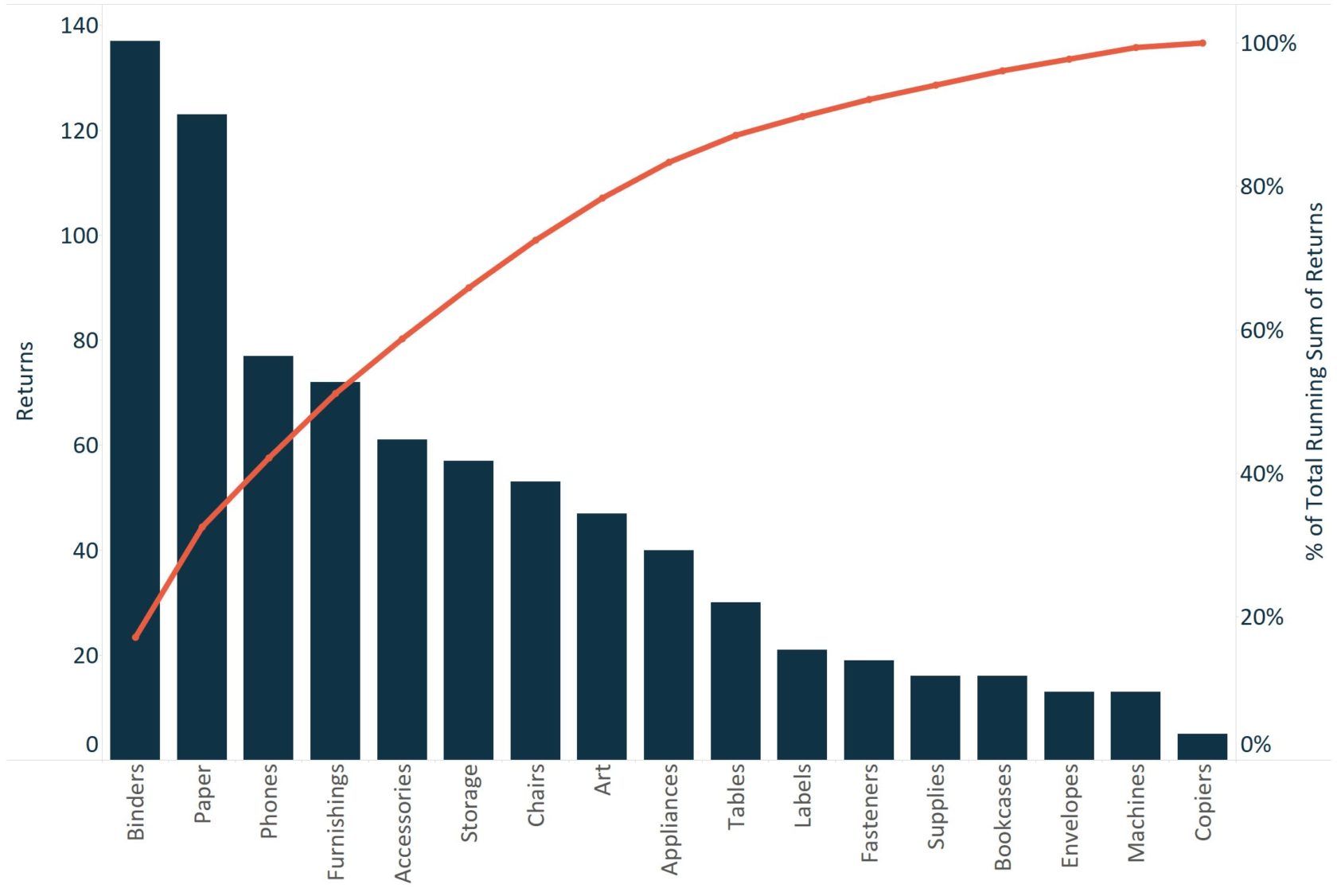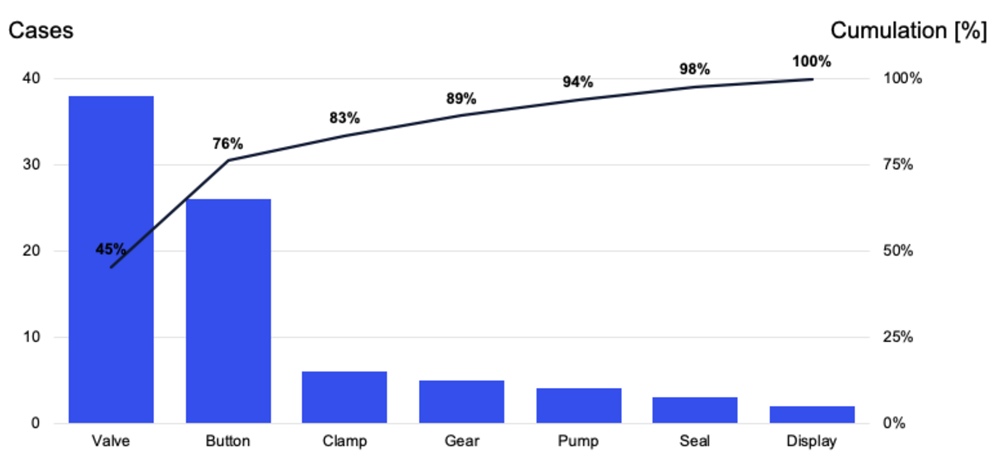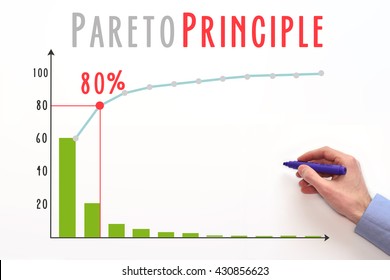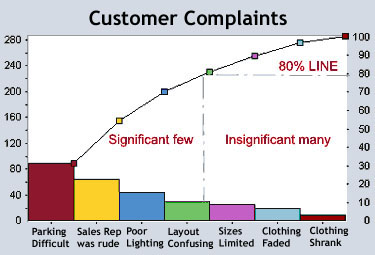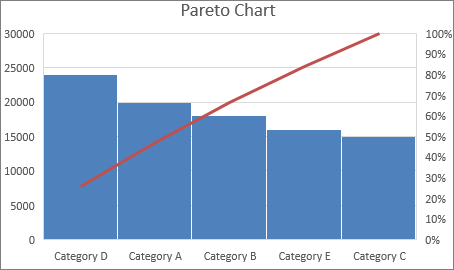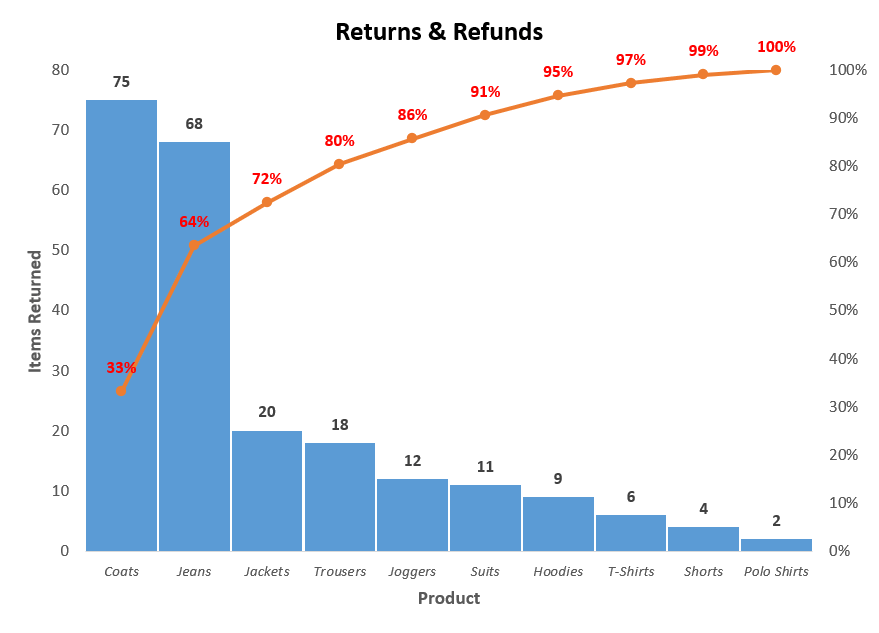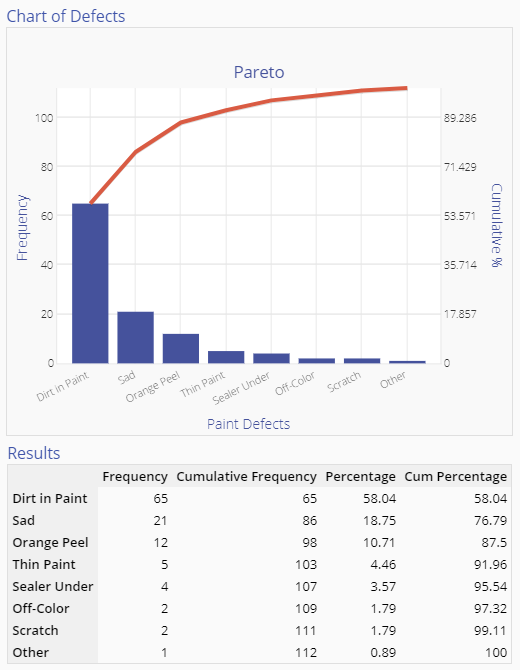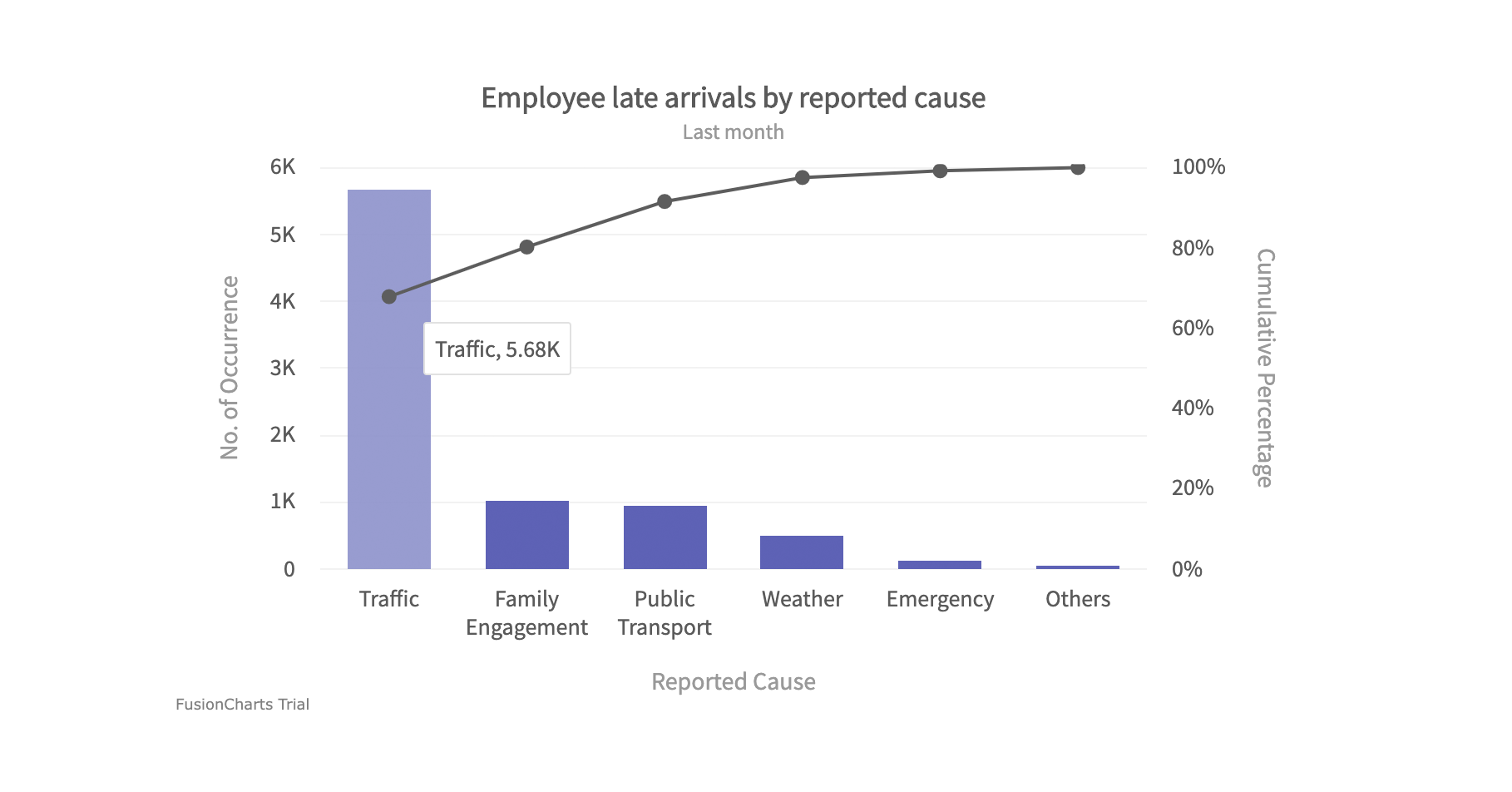What Is A Pareto Chart?
It exhibits their number of occurrences or in other words their frequency.
What is a pareto chart?. Pareto charts are widely used to analyze various scenarios. A Pareto chart is a bar graph. A Pareto chart is a type of chart that contains both bars and a line graph where individual values are represented in descending order by bars and the cumulative total is represented by the line.
What is Pareto Chart. The basic use of the chart derives from the Pareto principle which states. There are hundreds of tools available over the internet to make a Pareto Chart for your purpose but there is also one tool named EdrawMax which makes your Pareto Chart more efficient and is highly.
Pareto chart has two vertical axis and one horizontal axis. Pareto Chart also known as Pareto Analysis or Pareto Diagram is one of the seven basic tools of quality which helps to determine the most frequent defects complaints or any other factor. In this way the chart visually depicts which situations are more significant.
Then it calculates the impact of every problem to the situation. A Pareto Chart is a type of graph that contains both bars and a line graph where individual values are presented in descending order by bars and the cumulative total is represented by a line Source. Pareto analysis is also called as Pareto principle or 80 20 rule.
As a tool in Six Sigma Pareto is part of the quality control tools that are derived from historical data in order to come up with efficient and most appropriate actions to address most common and impacting failures. Individual causes or factors organized horizontally on X-Axis in the descending order. Pareto charts are extremely useful for analyzing what problems need attention first because the taller bars on the chart which represent frequency clearly illustrate which variables have the greatest.
A Pareto chart is a histogram that divides discrete observations into several categories to identify the vital few The phrase vital few is used to describe the elements that have the maximum impact on the solution. The lengths of the bars represent frequency or cost time or money and are arranged with longest bars on the left and the shortest to the right. A Pareto chart also called a Pareto distribution diagram is a vertical bar graph in which values are plotted in decreasing order of relative frequency from left to right.
It is an analysis tool used to help assess quality control problems and identify areas needing improvement to reduce these problems. In essence the Pareto Chart is simply the chart to illustrate the Paretos Principle which is simply 80 of consequences come from 20 of the causes for many outcomes. The Pareto Chart has many names and is also commonly referred to as a Pareto Analysis or Pareto Diagram.
With the use of Pareto scarce resources are efficiently allocated. A Pareto chart is a graph that first shows the key defects errors or problems of the situation. Pareto chart is a graphical representation of Pareto analysis.
Pareto chart is type of chart with combination of bar graph and line graph.

